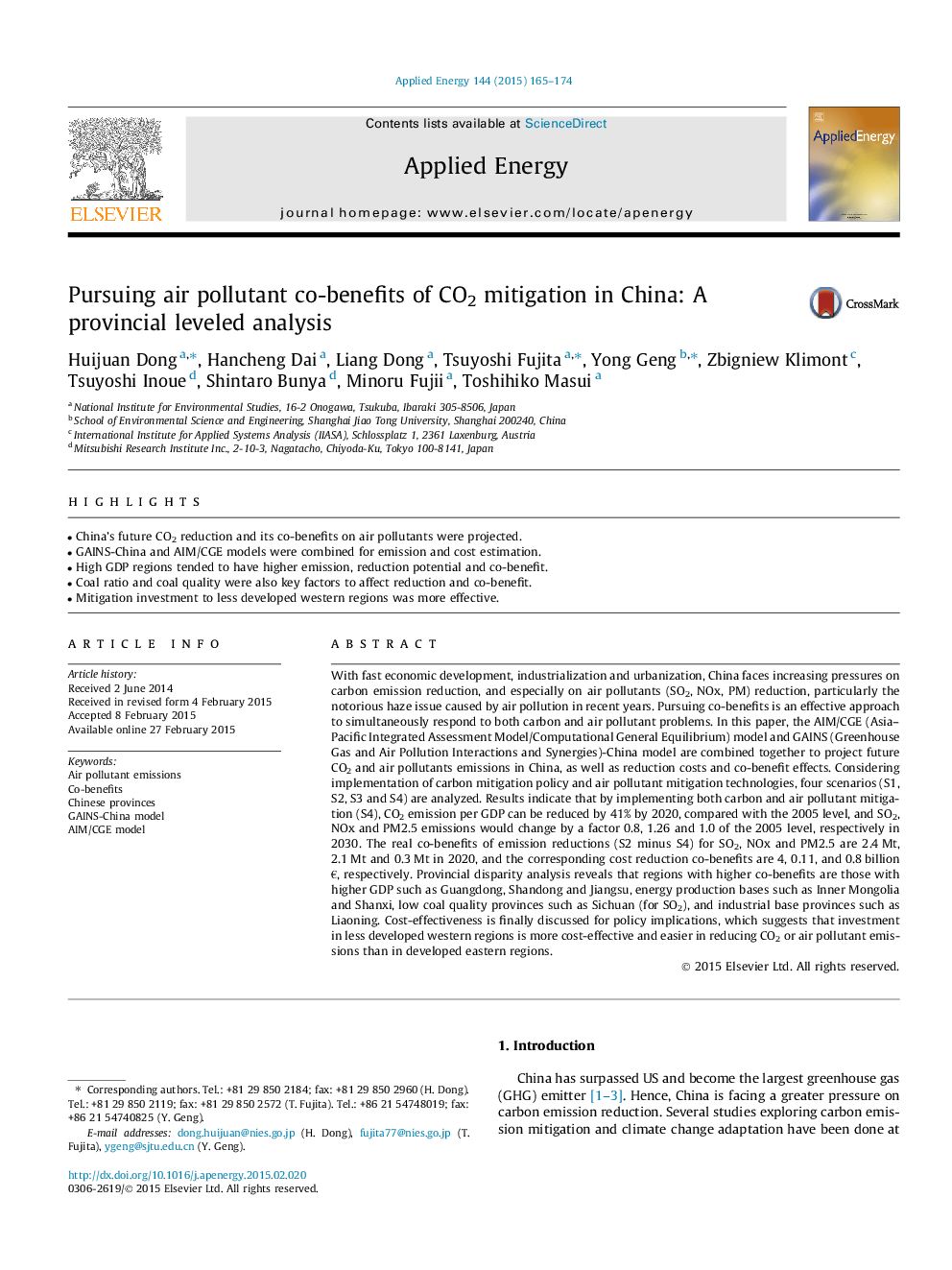| کد مقاله | کد نشریه | سال انتشار | مقاله انگلیسی | نسخه تمام متن |
|---|---|---|---|---|
| 242645 | 501885 | 2015 | 10 صفحه PDF | دانلود رایگان |

• China’s future CO2 reduction and its co-benefits on air pollutants were projected.
• GAINS-China and AIM/CGE models were combined for emission and cost estimation.
• High GDP regions tended to have higher emission, reduction potential and co-benefit.
• Coal ratio and coal quality were also key factors to affect reduction and co-benefit.
• Mitigation investment to less developed western regions was more effective.
With fast economic development, industrialization and urbanization, China faces increasing pressures on carbon emission reduction, and especially on air pollutants (SO2, NOx, PM) reduction, particularly the notorious haze issue caused by air pollution in recent years. Pursuing co-benefits is an effective approach to simultaneously respond to both carbon and air pollutant problems. In this paper, the AIM/CGE (Asia–Pacific Integrated Assessment Model/Computational General Equilibrium) model and GAINS (Greenhouse Gas and Air Pollution Interactions and Synergies)-China model are combined together to project future CO2 and air pollutants emissions in China, as well as reduction costs and co-benefit effects. Considering implementation of carbon mitigation policy and air pollutant mitigation technologies, four scenarios (S1, S2, S3 and S4) are analyzed. Results indicate that by implementing both carbon and air pollutant mitigation (S4), CO2 emission per GDP can be reduced by 41% by 2020, compared with the 2005 level, and SO2, NOx and PM2.5 emissions would change by a factor 0.8, 1.26 and 1.0 of the 2005 level, respectively in 2030. The real co-benefits of emission reductions (S2 minus S4) for SO2, NOx and PM2.5 are 2.4 Mt, 2.1 Mt and 0.3 Mt in 2020, and the corresponding cost reduction co-benefits are 4, 0.11, and 0.8 billion €, respectively. Provincial disparity analysis reveals that regions with higher co-benefits are those with higher GDP such as Guangdong, Shandong and Jiangsu, energy production bases such as Inner Mongolia and Shanxi, low coal quality provinces such as Sichuan (for SO2), and industrial base provinces such as Liaoning. Cost-effectiveness is finally discussed for policy implications, which suggests that investment in less developed western regions is more cost-effective and easier in reducing CO2 or air pollutant emissions than in developed eastern regions.
Journal: Applied Energy - Volume 144, 15 April 2015, Pages 165–174